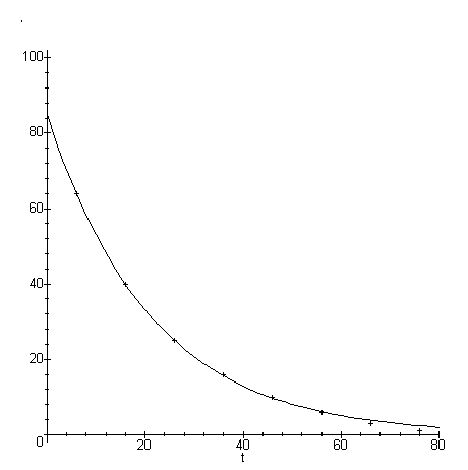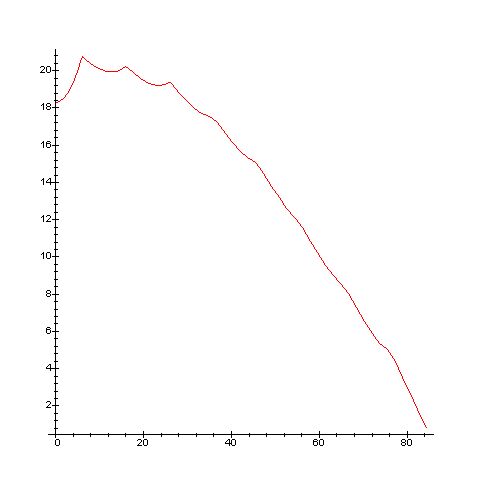 |


b. 24 April 1620
d. 18 April 1674
John Graunt was the true father of statistics. According to Karl Pearson, he was the first statistician, the first to deal with vital statistics, and the first statistician to become a fellow of the Royal Society of London.
What little is known of his life may be found in Aubrey's Brief Life of John Graunt and in the lecture notes of Karl Pearson on the history of statistics. It is likely he was quite well educated. Aubrey reports that he was an ingenious and studious person and that he understood both Latin and French.
He was apprenticed to a haberdasher 1636 to 1641 and
he himself was a haberdasher
by profession.
Graunt served in city offices of London through common-council-man, was Foreman of the Wardmote inquest 1669-70 and both Captain (1670) and Major (1671-1674) of the Trained-Band. (The Trayned Bands or Trained Bands existed in England during the Tudor period. They were in a sense equivalent to the modern Army National Guard. These were citizen soldiers held at constant readiness for the purpose of protecting England from invaders.) Having gained a reputation for prudence and justness, he was respected as an arbitrator and peacemaker.
Graunt's fame rests upon a small work commonly referred to as Observations on the Bills of Mortality. He was the first to deduce important consequences from the Bills of Mortality. For this reason, he is essentially the founder of universal registration of births, marriages and sources of death not for ecclesiastical matters but rather for purposes of state. Indeed, in 1671 Aubrey himself proposed that he be Registrar General.
The Observations on the Bills of Mortality was published in January 1662 and 50 copies were presented to the Royal Society. On 26 February 1662 Graunt was elected a fellow of the Royal Society. Bishop Thomas Sprat in his 1667 History of the Royal Society says that Mr. Graunt, although a shopkeeper of London, was recommended by King Charles II himself to the society. He was elected to its Council 30 November 1664 on which he remained until 9 April 1666. This same date he joined the committee of auditors for the Royal Society. As far as is known, he never left the society.
Samuel Pepys mentions Graunt several times in his diaries. He appears to have had a business relationship with him from 1661 to 1663. In the diaries Pepys refers to him as Mr. Graunt with one exception. An entry in 1668 reads Captain Graunt. It seems likely that at this time he was an officer of one of the Trained-Bands.
Graunt was made a governor of the New River Company on 25 September 1666. This company supplied water to the city of London from an Islington water house. This was achieved by constructing a new channel for water, hence the name. Lastly he became Warden of the Drapers' Company from 1671 to 1672.
Late in life Graunt converted from Calvinism (Puritanism) to Catholicism. It appears that due to this conversion, Graunt became the subject of slander. The Bishop of Salisbury, Gilbert Burnet (1643-1715) relates in his History of his own Time (published 1723) how Graunt was thought responsible for the Great Fire of London. Supposedly Graunt , knowing that a fire would be set, entered the water house in Islington and shut off the water supply to the section of London served by the New River Company. This delayed firefighting efforts for several hours. The fact that the fire occurred on 2 September 1666, 23 days before Graunt had access to the house, was not considered by the good bishop. Furthermore, the minutes of the same company show no record of the supply having been cut off the evening before. One must conclude that this accusation has no merit.
He died bankrupt. His bankrupcy was most probably due the losses he sustained in the Great Fire. But it is also likely that his ability to recover from a change in fortune was severely hampered by his conversion to Catholicism. Nonetheless Aubrey reports that his funeral was well attended.
Aubrey felt great respect for Graunt for he remarks upon his death, "cuius animae propitietur Deus" or "whose soul may God pardon."
A facsimile of the Observations on the Bills of Mortality 1st Edition is available at the website maintained by Ed Stephan.
A most interesting part of Graunt's Observations is found in Chapter XI, Of the number of inhabitants, sections 9 through 11. The spelling has not been corrected.
9. Whereas we have found, that of 100 quick Conceptions about 36 of them die before they be six years old, and that perhaps but one surviveth 76, we, having seven Decads between six and 76, we sought six mean proportional numbers between 64, the remainer, living at six years, and the one, which survives 76, and find, that the numbers following are practically near enough to the truth; for men do not die in exact Proportions, nor in Fractions: from when arises this Table following.
Viz. of 100 there dies within the first six years 36 The next ten years, or Decad 24 The second Decad 15 The third Decad 9 The fourth 6 The next 4 The next 3 The next 2 The next 1 10. From whence it follows, that of the said 100 conceived there remains alive at six years end 64.
At sixteen years end 40 At twenty six 25 At thirty six 16 At fourty six 10 At fifty six 6 At sixty [six] 3 At seventy [six] 1 At eighty [six] 0 11. It follows also, That of all, which have been conceived, there are now alive 40 per Cent. above sixteen years old, 25 above twenty six years old, & sic deinceps, as in the above Table: there are therefore of Aged between 16, and 56, the number of 40, less by six, viz. 34; of between 26, and 66, the number of 25 less by three, viz. 22: sic deniceps.
In truth, Graunt himself states that the table is little more than guesswork. Because the Bills of Mortality did not record age at death he estimated the mortality of infants and young children to age 6 based upon references to childhood diseases in the Bills. Similarly, he estimated mortality among the elderly through references to degenerative diseases. For all other ages he merely fit mean proportionals. Graunt's life table may have been the product of William Petty since Graunt had estimates of the death rate for ages 0-6 and after age 75 only. It is easy to see how he interpolated the values in the table by comparing the graph of y = 64(5/8)(t-6)/10 to Graunt's values.
| At age |
0 |
6 |
16 | 26 | 36 | 46 | 56 | 66 | 76 | 86 |
| Number alive | 100 | 64 | 40 | 25 | 16 | 10 |
6 |
3 |
1 |
0 |
 |
All future applications of Graunt's law of mortality assumed deaths are distributed uniformly throughout each decade. Consequently, the distribution of deaths according to this law is the piecewise constant function shown below.
 |
From this law of mortality it follows easily that the remaining expected life of anyone at age t is as indicated in the graph below. Observe how peculiar and unrealistic this graph appears.
 |
The first to make use of Graunt's law of mortality were the brothers Ludwig and Christiaan Huygens.